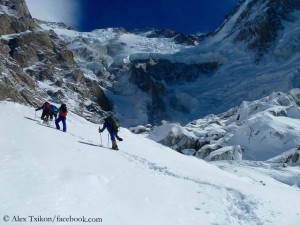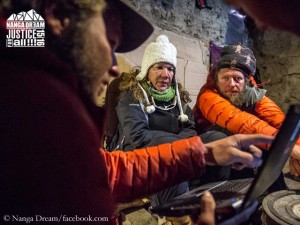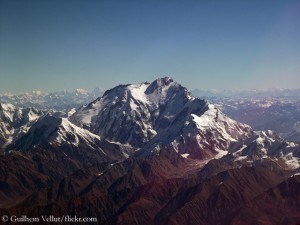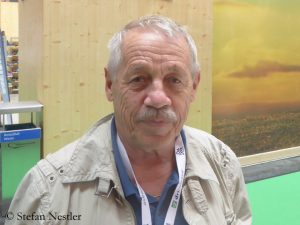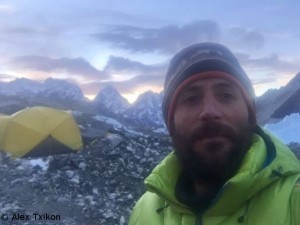Trouble on Nanga Parbat
Harmony is different from what’s obviously going on in Diamir Base Camp on Nanga Parbat. “The collaboration between [the Spaniard] Alex Txikon and Italian Daniele Nardi has become impossible due to obvious and ongoing disagreements about how to proceed during the expedition”, it says on Txikon’s website. There were “different working patterns and priorities” as well as “conflicting interpretations of some events, and also differences regarding the behavior in Base Camp”. It remains to be seen whether the two wranglers are able to overcome their differences or it’s too late to mend their ties. It is striking in any case, that Nardi was absent from the latest trip of the team. On Monday, Txikon, Tamara Lunger, Simone Moro and Ali Sadpara had used a wind break to climb with snowshoes up to 5,100 meters.
Strong wind and snow
An enduring improvement of the weather is not in sight during the next seven days. In addition to strong winds, new snowfalls are expected almost daily. The climbers will have to sit out the bad weather. Not an easy task considering that two climbers in Diamir Base Camp have problems with each other. There is still no news from Cleo Weidlich’s team on the Rupal side. As reported, the American born in Brazil arrived only one and a half weeks ago along with the Nepalese Pema Tshiring Sherpa, Temba Bhote and Sherpa Dawa Sangay – at a time when the Polish “Nanga Dream” team was already about to depart.
No picnic
One or another may have wondered why so many expeditions have already failed on Nanga Parbat. First of all, winter climbing on eight-thousanders is an extreme challenge. So far only 40 summit successes (22 of them by Polish “Ice Warriors”) have been recorded in calendar winter, 43 additional in meteorological winter which begins on 1 December. Winter climbers have to deal not only with icy cold but also with even thinner air because in winter the oxygen partial pressure at high altitude is lower than in other seasons. In addition, the days are shorter and the nights so cold that a very early start is rarely possible. It snows more often – and the jet stream is blowing. In this respect, Nanga Parbat is a villain. This eight-thousanders rises about 7,000 meters rises from the Indus valley to the summit in just 25 kilometers, far and wide no other high mountains, which could hold off the strong winds.



